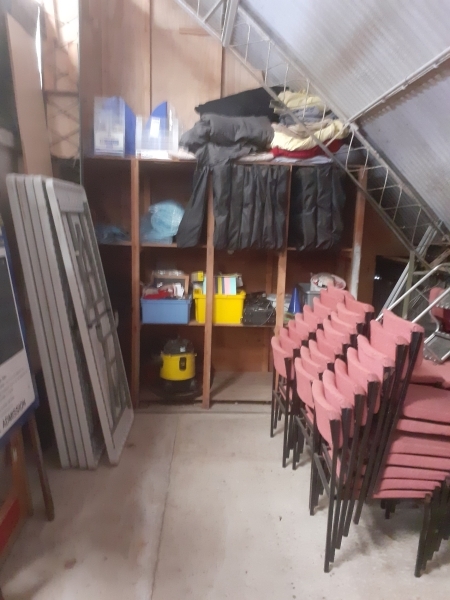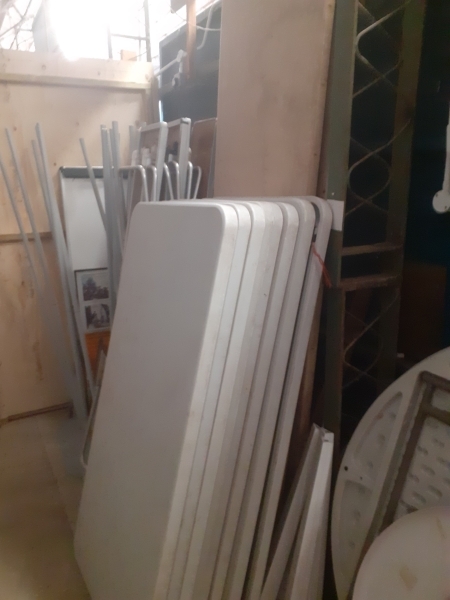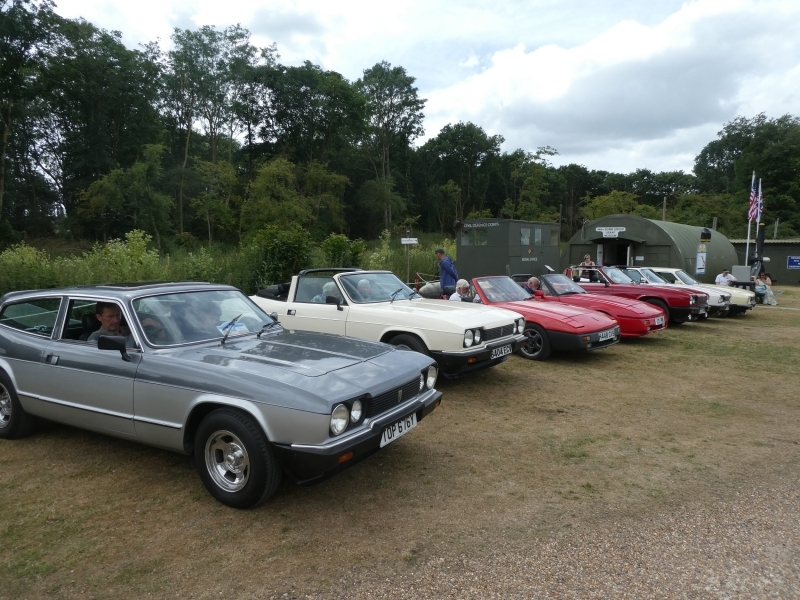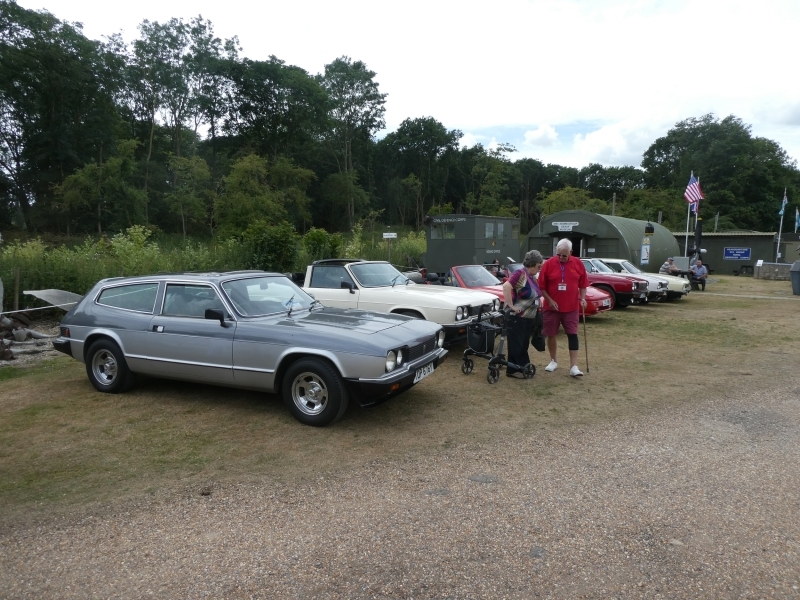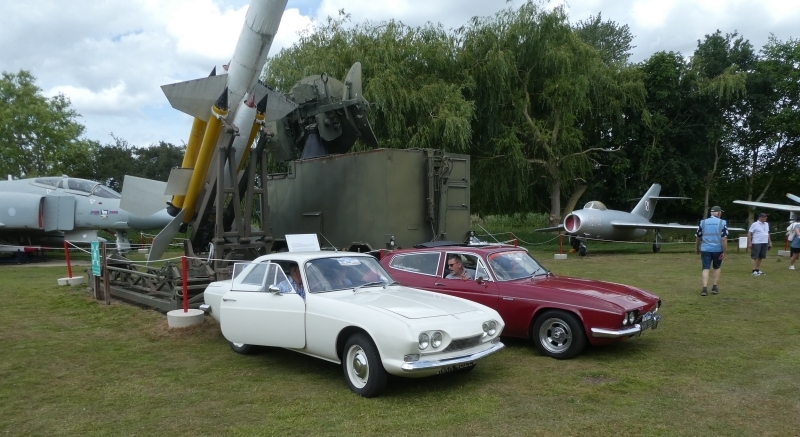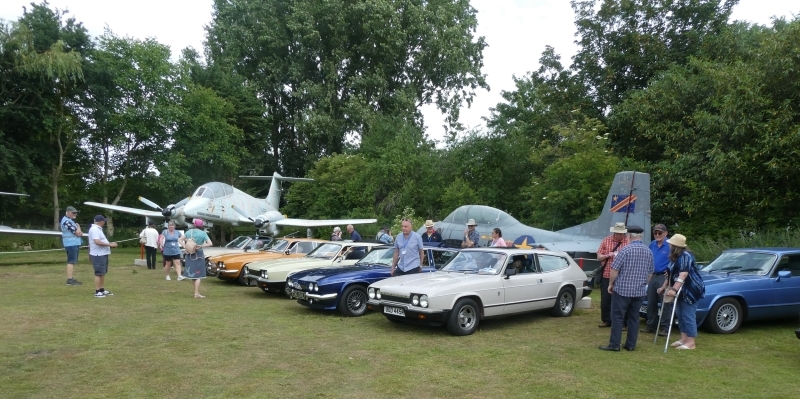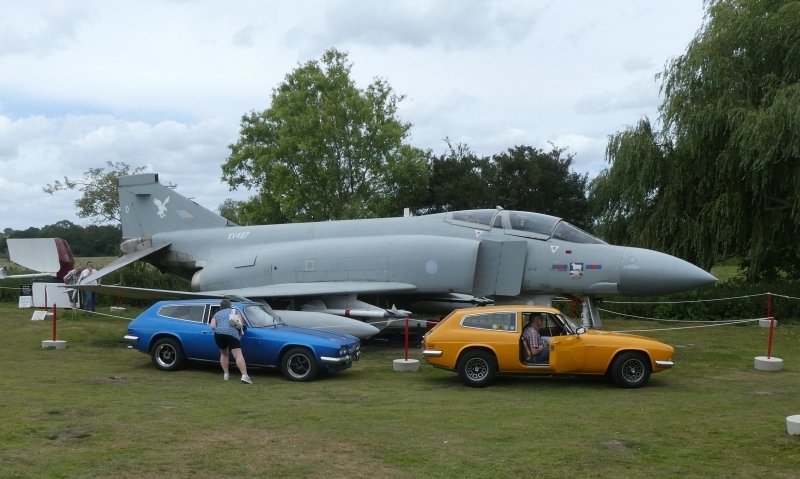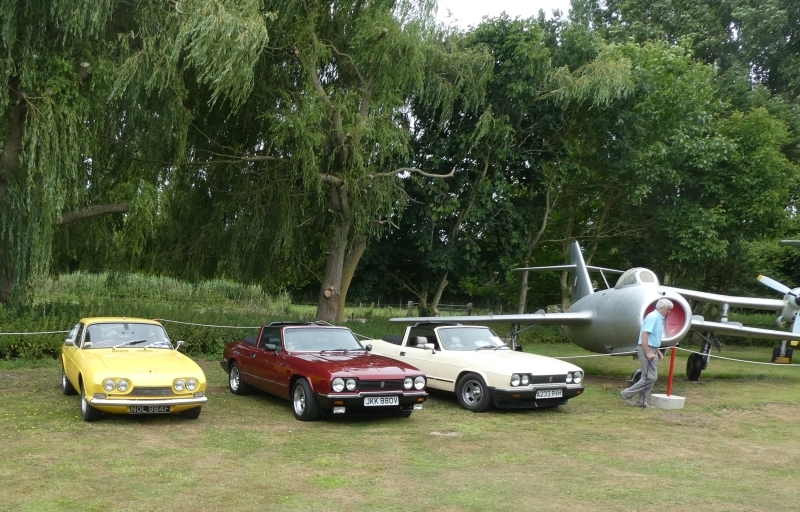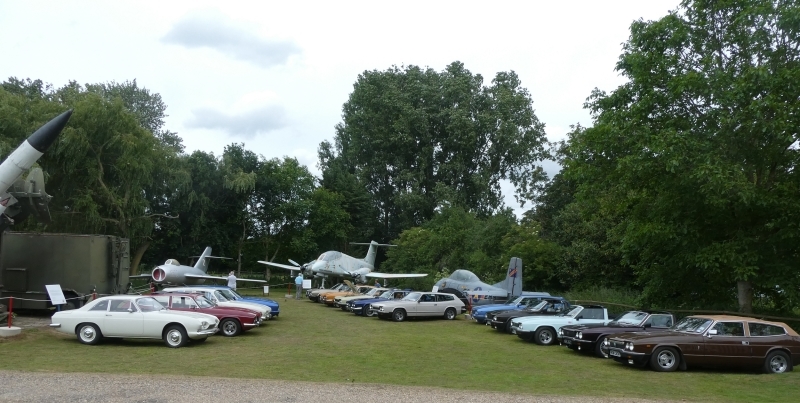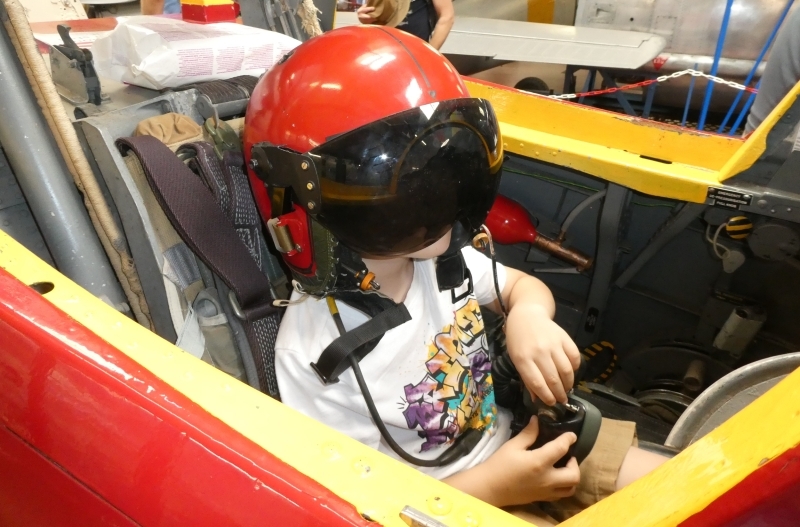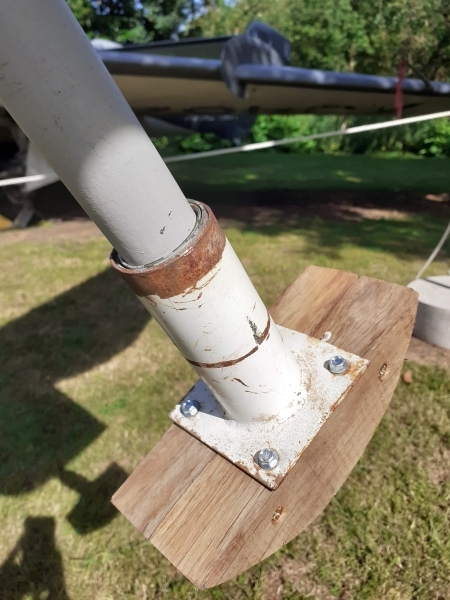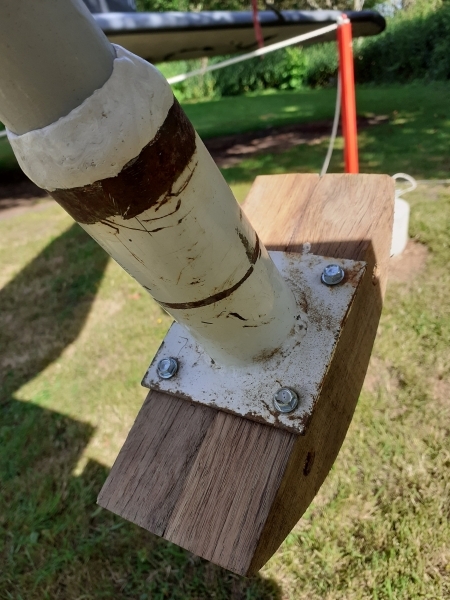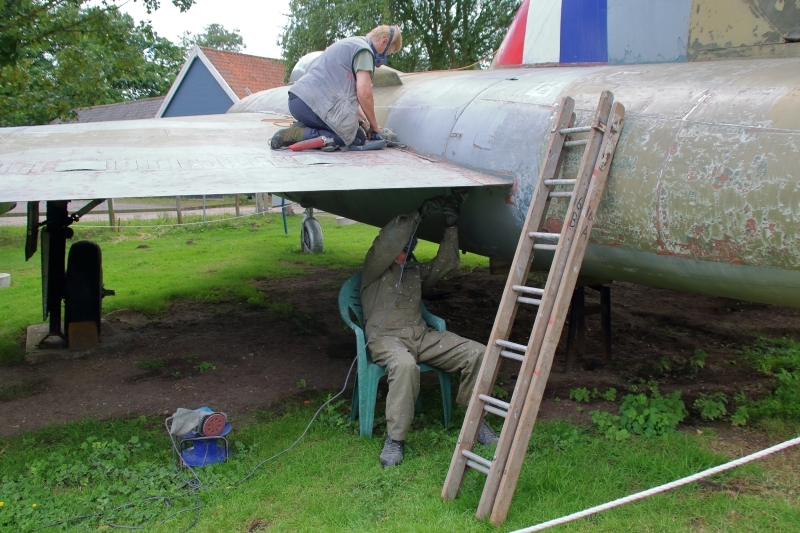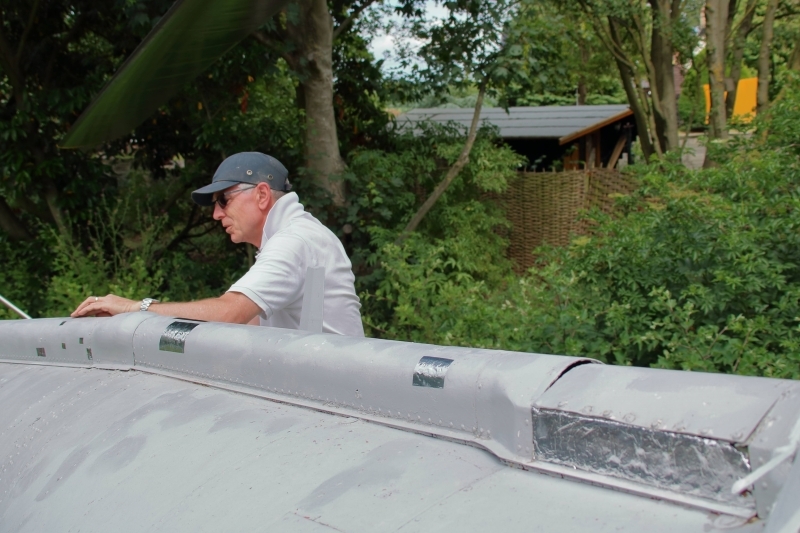NASAM Update as of the 30th Jun 2022
[joli-toc]
From the Chairman
Behind Closed Doors
Or at least behind the curtains.
Not everything that needs doing to keep the museum running efficiently is seen by the visitors. On Tuesday 21st of June, three volunteers spent the day trying, successfully, to find the floor in the hangar storage area.
A few things were disposed of, but a lot of space was created by simply folding tarpaulins and paint covers neatly and storing them on the shelves.
We now have space to put the recently restored wooden (winter) chairs where they belong.
Only a small corner left to sort out now.
![]()
(Photos) Behind Closed Doors
Classic Cars @ NASAM – Update
The museum was very busy on Saturday 25th with a visit by the Reliant Owners Club. Between 11:00 and 12:30, 25 cars turned up, most of them either Scimitars or Sabres although some owners had to arrive in other cars due to unserviceability or in one case the rail strike.
 The cars had started their rally on Friday and spent the night in Ipswich. They then moved on to Framlingham Castle for coffee and cake before driving to the museum and enjoying lunch in The Buck. After leaving the museum they were heading back to Ipswich for a second night and their banquet.
The cars had started their rally on Friday and spent the night in Ipswich. They then moved on to Framlingham Castle for coffee and cake before driving to the museum and enjoying lunch in The Buck. After leaving the museum they were heading back to Ipswich for a second night and their banquet.
One of the drivers was an old friend of the author whom he hadn’t seen for years, so that was good. The author can remember driving his Scimitar along the runway at RAF Watton…
We were meant to be there, it was a Scout parascending day.
Over 200 other visitors came, some to see the rally, others discovering it by serendipity. We had several budding pilots try the Gnat or Sea Hawk for size, plus many visitors were able to see inside the Valetta and Sea Prince.
Sadly as previously announced the Battle of Britain Flight Spitfire flypast had to be cancelled due to serviceability problems.
Steve
(Photos) Reliant Owners Club
From the Teams
General Updates
This edition contains a short piece from the Chairman on the behind-the-scenes (usually on a Tuesday and Thursday) work of the Volunteers in keeping the Museum tidy.
Then we have some team inputs. Barry has been busy both painting and producing an update from the Paint Team. We have two updates from barry this week. In addition, we have more from the Archives from Graham who has been rooting around in the Magazine Store to produce an article about war-time gases (WWII).
Having had one set of Classic Cars at the museum last Saturday, the 25th of Jun 2022 (see the Chairman’s report above), we are looking forward to another set of Classic cars at the next preplanned event (see below).
![]()
Next Event Day
The next event day currently planned is for the Jaguar Driver from Area 29 to be at the Museum on Sunday the 10th of July 2022.
 We are expecting around ten classic and current Jaguars to arrive on-site at around 1000 and spend most of the day with us. The cars will vary from 1950s classics right through to up-to-date vehicles. There will be plenty of photo opportunities, and a chance to chat to their owners to find out more about restoring, maintaining and driving these iconic machines.
We are expecting around ten classic and current Jaguars to arrive on-site at around 1000 and spend most of the day with us. The cars will vary from 1950s classics right through to up-to-date vehicles. There will be plenty of photo opportunities, and a chance to chat to their owners to find out more about restoring, maintaining and driving these iconic machines.
There will be plenty to see and plenty to do for all the family. We are wheelchair-friendly in all areas apart from the aircraft cockpits. The NAAFI café will be open for snacks, light refreshments, tea, coffee and cold drinks. With the shop selling ice creams and cold drinks, there could be some serious use of the picnic tables scattered throughout the site.
Don’t forget we are also dog-friendly in all areas apart from the shop and the aircraft cockpits.
We are FREE to enter and there is FREE parking on site. When budgets are stretched and finances tight, this is an inexpensive day out for the family.
Keep an eye on our Social Media for notifications of new events as they are agreed upon and planned. Social Media links are at the foot of the blog posting. Alternatively register with us to be notified whenever a new blog is published which will give details of upcoming events. Click on the button below to register for those emails.
Pete S
![]()
Painters Update
21/6/22 – Just (s)kidding!
This week the team arrived to a beautiful sunny morning. The chaffinches were chirping, the blue tits were tweeting and there was the gentle rustling of the trees until… the Heavy Metal guys started up! Yes, folks the idyllic sounds of summer’s morning were soon replaced by a symphony of sanders, whirring into action as Gwen, Cliff and Ian got back to the grind on the ‘Flat Iron.’ The team dotted their way around the aircraft continuing with the prep of the upper surfaces. By early afternoon, the heat was taking its toll, so Ian moved underneath to sand the starboard side Firestreak missile that was conveniently in the shade by that time.
Elsewhere, the team were a man down on the Whirlybird, so progress was limited this week. First job of the day was to finesse the new skid supplied by the Chippies last week. Michael and Ash had packed out the donor tube with some thin strips of metal in order to make it fit. However, the remaining small gaps could potentially fill up with water, so Barry made the new skid watertight by squeezing some epoxy putty into the gap, making a weatherproof collar in effect (see before and after pics Whirlwind Repaint 26 and 27). Once painted up, the casual observer shouldn’t notice the fake skid at all (hopefully!).
Having left Skid Row, Barry then set about finishing the clear coating of the rotor blades. An hour later, it was job done, save for the yellow blade tips. 4 coats of yellow later, the port rotor tip finally started to look yellow, as opposed to Primer Grey. With all the tips now done, Barry then hand-painted the inner arm of the starboard rotor blade with 2 coats of Gloss Black, being the part we could not reach from the scaffold towers last week. 1 down 2 to go, but given the good weather, Barry was keen to trial the White Dacrylate paint on the upper fuselage sections around the cockpit.
As well as trialling the Clear Coat lacquer on the Whirlybird, we are also going to trial the use of the Dacrylate paint as recommended by one of the Painters at Duxford. This comes as a White Primer, plus a White Topcoat. If it’s any good then we may use it on the Valetta next year. After lunch, Barry started to apply the White Primer. Initially, it seemed to have the consistency of watered-down single cream; not encouraging at all! The application was patchy at best, but at least it dries really fast. The fast-drying then allowed Barry to second coat a small area before the end of the day and this seemed to cover much better, giving a much more even base for the Topcoat to be applied to. To be continued…
![]()
28/6/22 – The Skipper takes it easy!
The team were greeted by another fine day. With temperatures due to hit around 23 degrees, the Skipper (Cliff) decided that some ‘pacing’ was required. At various points during the day, the Skipper was observed sitting down on the job, quite literally (see pictorial evidence Javelin Repaint 10)! Meanwhile, those made of sturdier stuff (Gwen) were still on their knees finishing off the topside of the ‘Flat Irons’ wings (see Javelin Repaint 11). Having pretty much completed the easy parts of the Javelin prep by the end of the day, the underside of the wings and the upper parts of the tail are now looming large on the worklist for next week!
Next door on the Whirlybird, the team were back to full strength this week. Barry spent the day finishing off the last two rotor blade hub connectors in Gloss Black before moving on to continue with the white priming of the cockpit area with the Dacrylate Primer (on trial). The warm temperatures meant that the primer was ‘skinning up’ very quickly in the paint caddy, so speed was of the essence. Meanwhile to the rear; and following our principle of ‘top down’ painting; Mark started painting the tail rotor (see Whirlwind Repaint 28). After completing the black and white stripes (the red bits will be done next week), Mark then moved on to repair the rear fuselage spine, prior to it being painted (Dacrylate) white. Having started on the basis that “this will only take 5 minutes” Mark was somewhat perplexed to still be applying aluminium tape to the (many) perforations (see Whirlwind Repaint 29) about 45 minutes later! Anyway, by the close of play all the necessary repairs had been made, leaving the way clear for the application of paint next week.
Barry
(Photos) Painters Update
![]()
From the Archives
1942 and The Chart Of War Gases…
After a couple of weeks away, we were able to crack open the treasure trove that is the Magazine Store again this week to continue with the cataloguing of the literally thousands of books, brochures, pamphlets and, oh yeah, magazines, that have been donated, stored and hidden away from  daylight for decades. Pick of the week this week is a small piece of wartime history – smaller than A4 and printed on a rough but durable brown card, the ‘Chart of War Gases’ turns out to be the duffers guide to identifying and surviving a gas attack in wartime Britain.
daylight for decades. Pick of the week this week is a small piece of wartime history – smaller than A4 and printed on a rough but durable brown card, the ‘Chart of War Gases’ turns out to be the duffers guide to identifying and surviving a gas attack in wartime Britain.
Printed by His Majesty’s Stationery Office on behalf of the Ministry of Home Security in 1942 the Man in the Street would have to part with a wartime penny to be able to buy a copy, although a bargain could be had by buying in bulk with 25 copies costing the equivalent of only 18 pennies. For his money, our man would be informed that gases could be broken down into five groups – Tear Gases (characterised as harmless), Choking Gases (noted as deadly), Blister Gases (described as not being killers), Nose Irritant Gases (also harmless) and Systemic Poisoning Gases – for which hot sweetened tea could be given.
He would further understand that each group would have two or three different likely poisoning agents, and he could distinguish between them by smell and the effects on his body. Unfortunately, although it wasn’t made clear in the leaflet, he would have to smell the attack to know what he was dealing with, so a good sniff of bleaching powder (chlorine gas) or maybe musty hay (phosgene) before he fitted his respirator would likely see him rushed to hospital ‘as a stretcher case’ as both were potentially deadly. Luckily, hot sweet tea was recommended as a first aid treatment in both cases, so dying probably wasn’t a completely foregone conclusion. The leaflet also noted that ‘a trace of phosgene in the air makes smoking unpalatable’, seemingly putting non-smokers at a distinct disadvantage in detecting the threat.
 If the smell was strongly of geraniums though, then he was likely dealing with the blistering effects of a Lewisite attack and would need to protect his eyes and skin. Even though it contained arsenic, it seems soap and water was effective at limiting the nastier effects of both Lewisite and Mustard Gas, the other blistering agent listed, but not as effective as ‘anti-gas ointment’ would be. No further details of this magic ointment were given but it was made clear that whatever was used to clean the affected areas, it needed to be done quickly. Lewisite was noted as ‘producing an immediate irritation’ to eyes and skin whereas Mustard Gas could take fully 24 hours to produce the complete effect. Tea and sugar rations did not need to be plundered for treating either of the blistering gases however, but the Blistering section in the table ends with the encouragement that ‘slight exposure to the vapour of either agents has little, if any, injurious effects’. Good to know.
If the smell was strongly of geraniums though, then he was likely dealing with the blistering effects of a Lewisite attack and would need to protect his eyes and skin. Even though it contained arsenic, it seems soap and water was effective at limiting the nastier effects of both Lewisite and Mustard Gas, the other blistering agent listed, but not as effective as ‘anti-gas ointment’ would be. No further details of this magic ointment were given but it was made clear that whatever was used to clean the affected areas, it needed to be done quickly. Lewisite was noted as ‘producing an immediate irritation’ to eyes and skin whereas Mustard Gas could take fully 24 hours to produce the complete effect. Tea and sugar rations did not need to be plundered for treating either of the blistering gases however, but the Blistering section in the table ends with the encouragement that ‘slight exposure to the vapour of either agents has little, if any, injurious effects’. Good to know.
Nose irritants and tear gases were listed only by their initials – CAP, KSK and BBC forming the latter group and DA, DM and DC the former. Apart from smelling variously of floor polish, pear drops or a penetrating bitter-sweet odour, little more information is given save that ‘symptoms usually subside when the respirator is put on’. Nuff said.
Systemic poisoning with Arsine is a different case however. Arseniuretted hydrogen is an invisible non-persistent odourless gas that creates ‘weakness and breathlessness on exertion; headaches, nausea and vomiting with pains in the back and stomach. It affects blood, liver and kidneys with the severest symptoms being delayed for an hour or two’. Nasty – and all the more so because yoou wouldn’t know you’d sniffed it until the physical symptoms began to show. Arsine would turn the patient into a stretcher case needing medical help – but at least ‘hot sweet tea may be given’. Remarkably though, no further first-aid or other help for a potentially lethal condition is offered.
The leaflet does end on a positive note however, with the promise that ‘your respirator completely protects your eyes, nose, throat, and lungs against all war gases’, notably leaving out the effects of blistering agents on the rest of your body. Not mentioned is the need to take a good lungful of the stuff before you know what you’re up against and hence know what to do about it, and there are certainly no promises made on the medical effectiveness of sweet tea.
Graham
The Repeat Info
The repeat information is still here I’m afraid, and I make no apologies for keeping his section in our blog. We are a charitable organisation relying on monies from the public to keep us going. Any help we receive is gratefully accepted and enables the museum to continue in our mission “To conserve, preserve and promote the history of aviation in East Anglia, whilst providing a fun, family-friendly and interactive museum, promoting education and remembrance of the events of the past“.
Are you thinking of helping ??
 We obtain most of our finances by donations and by membership fees. We save money by having a dedicated group of volunteers that keep the museum and the exhibits both manned and maintained. We hope therefore a few people may consider helping in the ways below.
We obtain most of our finances by donations and by membership fees. We save money by having a dedicated group of volunteers that keep the museum and the exhibits both manned and maintained. We hope therefore a few people may consider helping in the ways below.
There are three easy ways to help: Help by becoming a Museum Member, also by Volunteering to help at the museum, or by Donating to assist in our running costs. Please click on the appropriate button below to access the appropriate information:
Keep Up To Date
![]() To keep up to date with further information, please keep an eye on our Social Media (see the Social Media buttons at the foot of this blog) or click on the button below to be notified by email of any upcoming changes by seeing the latest blog.
To keep up to date with further information, please keep an eye on our Social Media (see the Social Media buttons at the foot of this blog) or click on the button below to be notified by email of any upcoming changes by seeing the latest blog.



